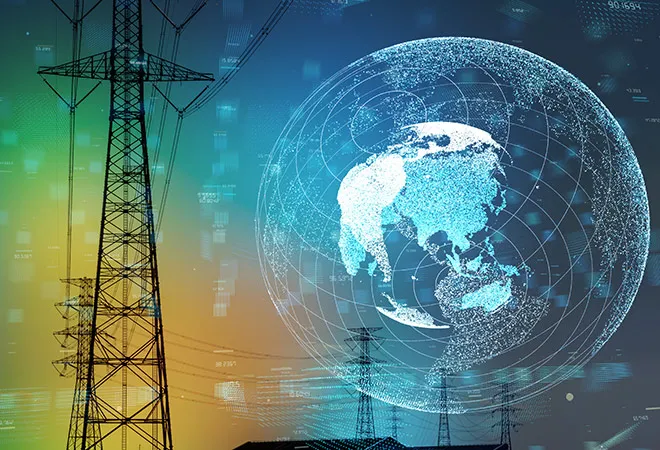
Recently, the Indian oil refining giant of Reliance Industries announced its mega plan to invest US $10.1 billion in green energy over the next three years to achieve the net-zero target of carbon-neutrality.
This has further pushed forward the debate around efforts to address climate change by transforming our energy systems from being fossil-dependent to ones based on renewable sources of energy. However, there are certain undercurrents and latent developments which hinder the prospects of a clean energy transition. A pattern which is emerging and is widely claimed to be a welcome step, is announcements of going green by prominent state-owned players of the fossil fuel regime.
These include the National Thermal Power Corporation, the Government of India’s thermal power company, which announced a renewed target of installing 60 gigawatts (GW) renewable energy by 2032, up by almost 50 percent from the previous 32 GW target set in October 2020. The second company is the state-owned coal mining company, the Coal India Limited, which announced two wholly owned subsidiaries recently to venture into renewable energy projects. This comes after its earlier announcement to invest INR 56.50 billion by March 2024 to develop solar power for powering its own mining operations.
Apart from these recent announcements, various corporates, financial institutions, asset managers, state governments, and philanthropic organisations have committed to reduce their carbon footprint by pulling out money from “dirty coal” into “clean and green energy”.
What remains a rather risky proposition is expecting complete transparency in the flow of money and credibility of the means of achieving the ambitious net-zero targets by different entities. This forms the first layer of uncertainty in the way energy transition is being powered through financial divestments and net-zero targets.
What remains a rather risky proposition is expecting complete transparency in the flow of money and credibility of the means of achieving the ambitious net-zero targets by different entities. This forms the first layer of uncertainty in the way energy transition is being powered through financial divestments and net-zero targets.
The next layer of uncertainty comes from the way the government is preaching and practicing contrasting developments with respect to energy transition. The high priests of policymaking in India are vociferously advocating and popularising the clean energy targets of 450 GW by 2030, which has attracted global eyeballs and praise. However, at the same time, though in silent ways, there have been developments that further the fossil fuel sector too.
Take the coal sector for example. The trends suggest that coal production in India has been continuously rising in this decade, crossing the figure of 730 million metric tonnes (MT) in 2019–20. However, even the rising production is unable to meet the rising coal demand, and therefore, India’s import dependence has also been rising. The government’s plan is to phase out coal imports by the year 2025, which implies that if demand is not starkly reduced, increased coal production is the only way. This, in addition to the recent commercialisation of coal mines, is a signal to domestic investors to invest more in coal production.
In the oil sector, there is a similar scenario. While India has one of the world’s largest oil refining capacity, it still is the world’s second largest oil importer with over 80 percent dependence on imported crude oil to meet domestic needs. In this backdrop, the government again has planned to reduce the import dependence by 10 percent in 2022. This again gives a positive signal for oil exploration domestically and attracting investments for the same. A major policy push for this was the Hydrocarbon Exploration Licensing Policy of 2016 which provided for uniform licensing, coupled with open acreage policy.
This is the state of affairs in the natural gas sector as well, where the share of natural gas in meeting India’s primary energy needs has been fixed at around 6 percent over the past few years. The Government of India plans to increase this to 10 percent by 2025.
In all these sectors of coal, oil, and natural gas, the State seems to be steering clear of any conclusive decision about the future trends of these sectors. On the one hand, we are celebrating the remarkable announcements, which as India’s Power Minister, Raj Kumar Singh himself said are mere clouds in the sky, while also striving for enhanced domestic exploration of fossil fuels and inflow of investments in the fossil sector.
This is also explained in the remarks of the International Energy Agency in its annual publication, India Energy Outlook 2021. It says that “India is characterised by the co-existence of shortage and abundance in several parts of its energy system. India possesses the world’s fifth largest reserves of coal, nonetheless, it is one of the major coal importers. India is a major centre for global oil refining, but relies overwhelmingly on imported crude.”
It goes on to mention how the choice of per capita or absolute values make a big difference by citing example of carbon emissions, which are third highest in the world in terms of absolute values but barely are in the top 100 when it comes to per capita emission.
Therefore, as long as the transition remains about numbers and statistics, it will be continued to be projected as a glamorous pursuit. It is only when one starts looking inside the numbers to indicators like the policy vision, latent motives and undercurrents, that one explores the shallowness of the glamour of energy transition.
As long as the transition remains about numbers and statistics, it will be continued to be projected as a glamorous pursuit. It is only when one starts looking inside the numbers to indicators like the policy vision, latent motives and undercurrents, that one explores the shallowness of the glamour of energy transition
Finally, the anomaly of our climate discourse being described as the one which places “climate justice” at the heart of it, there have been no concerted developments which exemplifies these announcements and translates them to ground-level changes. The coal sector, reportedly employing 12 million workers, is painted as a ‘dirty’ sector when it comes to climate conferences, yet no concrete steps have been taken either in policies or practices that establish that the State is concerned about climate justice and will adopt principles like just transition going forward.
Hence, while developments like investments in renewable energy, net-zero target announcements, and emission-reduction trajectory are important, there is a need to question these developments from the point of view of their credibility and their intent towards the welfare of people and planet.
The views expressed above belong to the author(s). ORF research and analyses now available on Telegram! Click here to access our curated content — blogs, longforms and interviews.




 PREV
PREV


